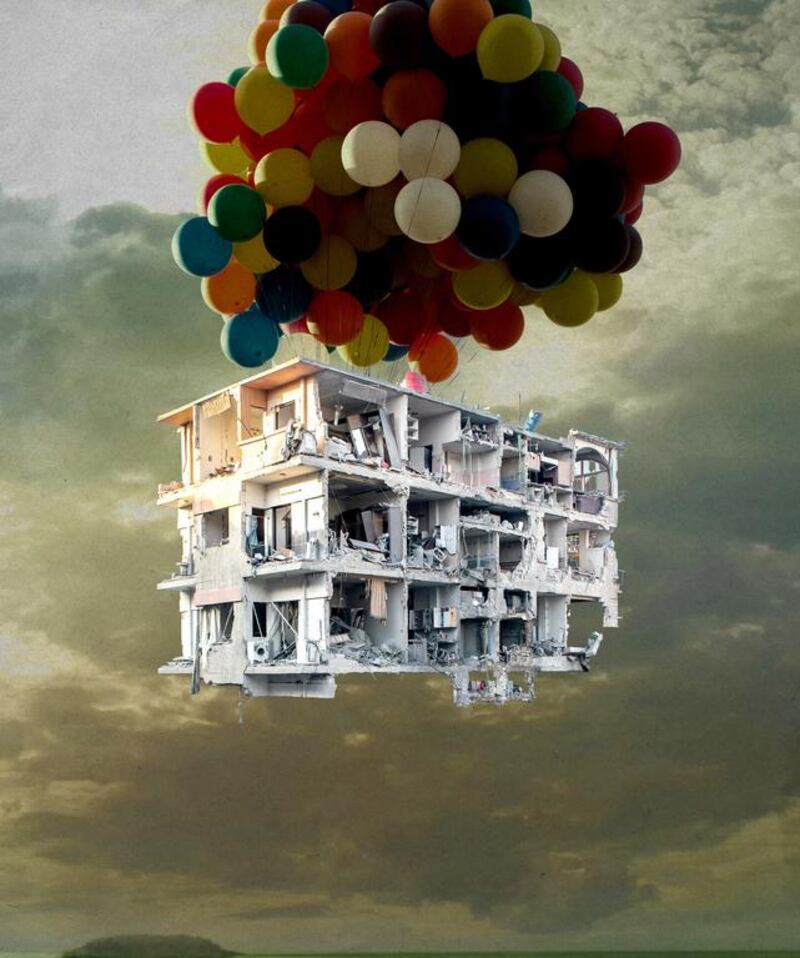Connoisseurs of Middle Eastern contemporary art have long been aware of Tammam Azzam, but to the rest of the world, he remained unknown until February this year, when one of his works went viral – a powerful vindication of his decision to abandon painting for digital art.
The work Freedom Graffiti superimposes one of western art's most tender works, Gustav Klimt's The Kiss, upon the ruins of a Damascene building.
Azzam is a Syrian who fled from army conscription in Damascus seven months after the conflict in his country began, arriving in Dubai two years ago. He brought his wife and child, but his parents and brother remain in Syria, along with his thoughts, hopes and heart.
“I feel that I’m there in the streets in Syria,” Azzam says. “Nobody wants to say I hope to be under a bomb or under a destroyed building, but I hope that I’m supporting them, and I represent their feelings.”
Just as he has dispensed with the slow, old-world techniques of paint, Azzam’s work forgoes the cryptic abstraction that makes contemporary art such a difficult language. A graphic designer by trade, he combines the most direct of media (digital) with the urgency of street art to share his messages of hope and pain. There is no time for mystery here: there is a story to be told and it must be told now. Yet Azzam has also become ambivalent about the genuine power of art.
“Art doesn’t make sense of what’s happening in Syria, because after two years and six months and more than 200,000 people killed, it can’t make sense,” he says. “But I’ll try to do my best to talk about people there. So I want [people] to pay attention to what’s happening in this part of the world. It is my duty to do that for myself and for Syria.”
Before the war, he painted semi-abstract, nearly monochrome landscapes and was best known for his Laundry series. It was gestural exploration on a level that, in the light of his latest exhibition, seems unimaginably esoteric. Now, works such as Syrian Olympic, which shows stencilled marksmen shooting running figures beneath the Olympic rings, offer no ambiguity in meaning. But Azzam asserts that while the technique has changed, the concerns are the same.
For Syrians, it seems, nothing can be the same as it was and that goes for art as much as life. “I used to think artists made art for art’s sake, but now, as a Syrian, it’s different. [That’s why] I named the show I, The Syrian,” says Azzam.
It reflects the revolution in his country – and he is insistent on this point. “When you are a Syrian, you know your country more than anybody else, so for me, a Syrian born and growing up there, I know that what’s happening in Syria is a revolution; it is not a civil war,” he argues passionately. “What I’m doing is nothing compared with what children there [are living through], but this is what I can do. I don’t have the solution, but I can support my people this way, and that’s it.”
• Tammam Azzam: I, The Syrian is at Ayyam Gallery London from December 12 to January 30. Visit www.ayyamgallery.com










